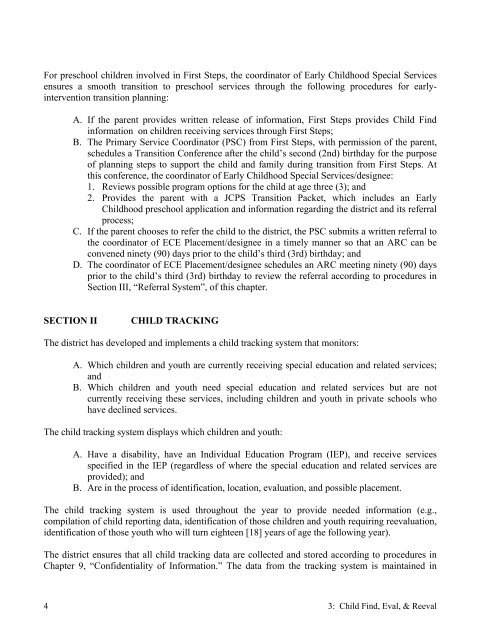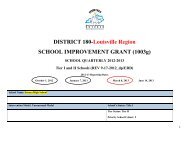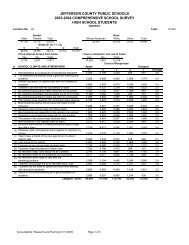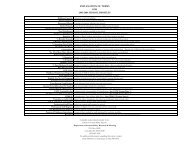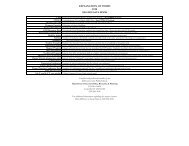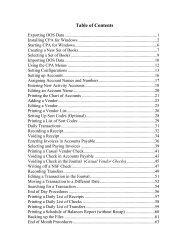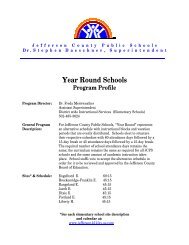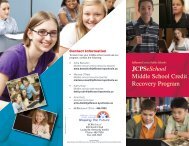exceptional child education - Jefferson County Public Schools
exceptional child education - Jefferson County Public Schools
exceptional child education - Jefferson County Public Schools
Create successful ePaper yourself
Turn your PDF publications into a flip-book with our unique Google optimized e-Paper software.
For preschool <strong>child</strong>ren involved in First Steps, the coordinator of Early Childhood Special Services<br />
ensures a smooth transition to preschool services through the following procedures for earlyintervention<br />
transition planning:<br />
A. If the parent provides written release of information, First Steps provides Child Find<br />
information on <strong>child</strong>ren receiving services through First Steps;<br />
B. The Primary Service Coordinator (PSC) from First Steps, with permission of the parent,<br />
schedules a Transition Conference after the <strong>child</strong>’s second (2nd) birthday for the purpose<br />
of planning steps to support the <strong>child</strong> and family during transition from First Steps. At<br />
this conference, the coordinator of Early Childhood Special Services/designee:<br />
1. Reviews possible program options for the <strong>child</strong> at age three (3); and<br />
2. Provides the parent with a JCPS Transition Packet, which includes an Early<br />
Childhood preschool application and information regarding the district and its referral<br />
process;<br />
C. If the parent chooses to refer the <strong>child</strong> to the district, the PSC submits a written referral to<br />
the coordinator of ECE Placement/designee in a timely manner so that an ARC can be<br />
convened ninety (90) days prior to the <strong>child</strong>’s third (3rd) birthday; and<br />
D. The coordinator of ECE Placement/designee schedules an ARC meeting ninety (90) days<br />
prior to the <strong>child</strong>’s third (3rd) birthday to review the referral according to procedures in<br />
Section III, “Referral System”, of this chapter.<br />
SECTION II<br />
CHILD TRACKING<br />
The district has developed and implements a <strong>child</strong> tracking system that monitors:<br />
A. Which <strong>child</strong>ren and youth are currently receiving special <strong>education</strong> and related services;<br />
and<br />
B. Which <strong>child</strong>ren and youth need special <strong>education</strong> and related services but are not<br />
currently receiving these services, including <strong>child</strong>ren and youth in private schools who<br />
have declined services.<br />
The <strong>child</strong> tracking system displays which <strong>child</strong>ren and youth:<br />
A. Have a disability, have an Individual Education Program (IEP), and receive services<br />
specified in the IEP (regardless of where the special <strong>education</strong> and related services are<br />
provided); and<br />
B. Are in the process of identification, location, evaluation, and possible placement.<br />
The <strong>child</strong> tracking system is used throughout the year to provide needed information (e.g.,<br />
compilation of <strong>child</strong> reporting data, identification of those <strong>child</strong>ren and youth requiring reevaluation,<br />
identification of those youth who will turn eighteen [18] years of age the following year).<br />
The district ensures that all <strong>child</strong> tracking data are collected and stored according to procedures in<br />
Chapter 9, “Confidentiality of Information.” The data from the tracking system is maintained in<br />
4 3: Child Find, Eval, & Reeval


